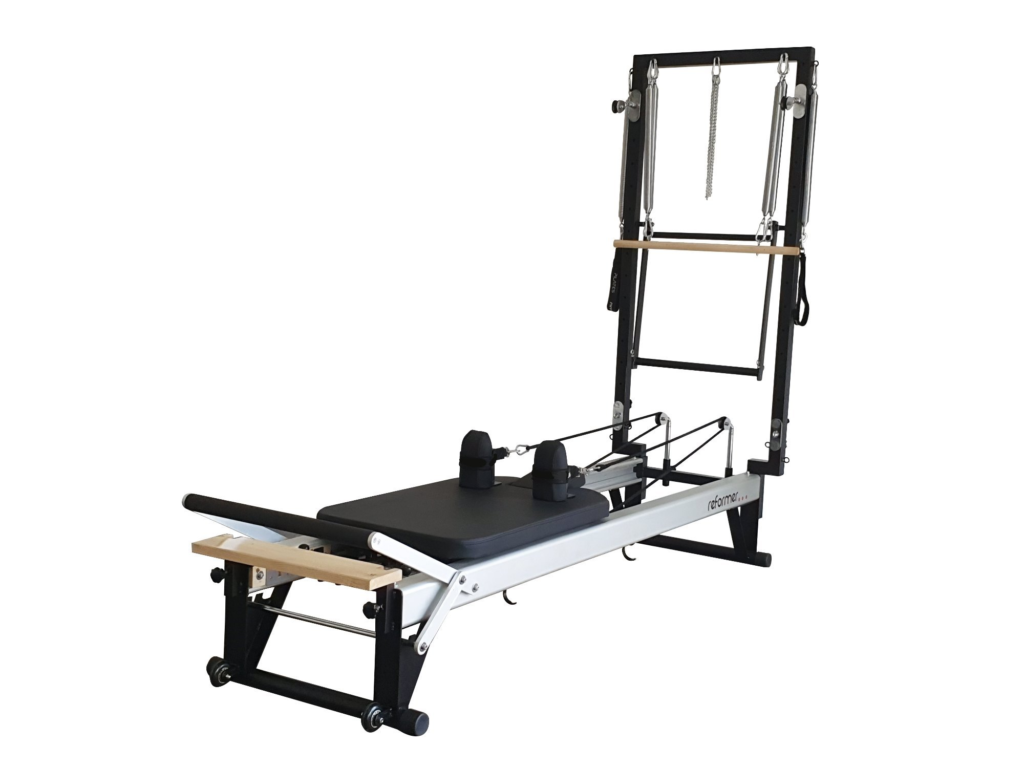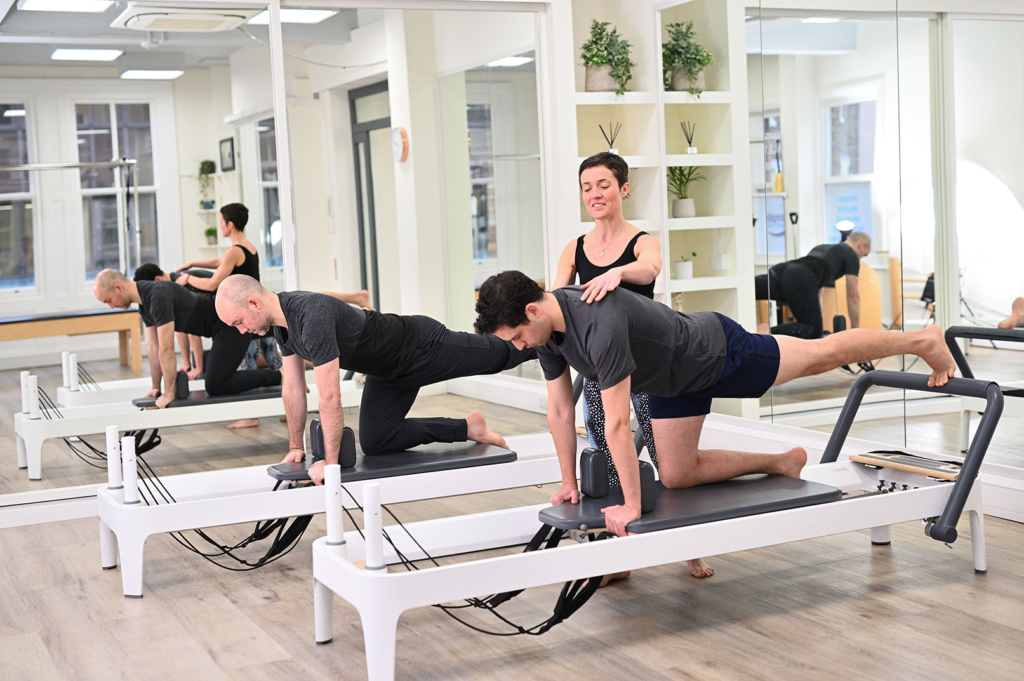
Pilates has long been celebrated for its ability to improve core strength, flexibility, and posture. While mat-based Pilates is widely practiced, the use of Pilates machines, such as the Reformer, Cadillac, or Chair, takes the workout to another level. These machines offer a full-body workout, providing resistance, support, and versatility that enhance the overall Pilates experience. Whether you’re looking to build strength, rehabilitate an injury, or improve your flexibility, Pilates machines offer numerous benefits that make them a valuable addition to any fitness routine.
1. Full-Body Engagement
One of the key benefits of using a Pilates machine is its ability to engage the entire body in a balanced way. While many exercises target specific muscle groups, Pilates machines promote a full-body workout by ensuring that various muscle groups are activated simultaneously. The resistance provided by the machine, typically through springs or bands, encourages the engagement of stabilizing muscles, core strength, and limb movement all at once.
Example: Reformer Machine Workouts
The Pilates Reformer machine uses a sliding carriage, adjustable springs, and ropes to provide resistance. Whether you’re performing leg presses, lunges, or upper body exercises, the Reformer challenges both major and stabilizing muscles. The springs offer varying levels of resistance, allowing for controlled movements that target muscles in the arms, legs, core, and back all at the same time.
2. Low-Impact and Joint-Friendly
Pilates machines are designed to offer a low-impact workout that is gentle on the joints while still being highly effective. Unlike high-impact exercises such as running or jumping, the smooth, controlled movements performed on Pilates machines reduce the risk of strain and injury. This makes them an ideal option for people with joint pain, arthritis, or those recovering from injuries.
Example: Cadillac Machine for Rehabilitation
The Cadillac machine, with its various bars, straps, and springs, is often used for rehabilitation exercises. The low-impact nature of these exercises helps individuals build strength and mobility without putting excessive strain on their joints. For example, individuals recovering from knee or hip surgeries can perform gentle leg exercises on the Cadillac to improve range of motion and build strength without aggravating their injuries.
3. Core Strength and Stability
Pilates is renowned for its focus on core strength, and the use of machines like the Reformer and Wunda Chair takes this core work to a deeper level. The resistance and support provided by the machines force the core muscles to engage throughout the entire range of motion, ensuring that your abdominal, lower back, and pelvic muscles are constantly activated.
Example: Abdominal Exercises on the Wunda Chair
The Wunda Chair is a compact Pilates machine that offers challenging core exercises. Movements such as the teaser, pike, or frog require core stability and strength to control the body’s movement against the resistance of the springs. This not only strengthens the core but also improves posture and balance.

4. Improved Flexibility and Range of Motion
Using a Pilates machine allows for a greater range of motion than traditional mat exercises. The springs and pulleys help stretch the body into positions that might be difficult to achieve on your own, promoting flexibility and muscle lengthening. Over time, regular use of a Pilates machine can significantly improve flexibility and joint mobility.
Example: Stretching on the Pilates Reformer
On the Reformer, movements such as leg circles or the elephant stretch gently lengthen muscles in the legs, back, and shoulders. The machine provides support, which allows for deeper, more controlled stretches than what you might achieve with mat exercises alone. This is particularly beneficial for individuals looking to improve their flexibility for other physical activities or simply to alleviate tightness in their muscles.
5. Customizable Resistance Levels
One of the most significant benefits of Pilates machines is the ability to adjust the resistance according to your fitness level and goals. Whether you’re a beginner or an advanced practitioner, the springs on machines like the Reformer or Cadillac can be adjusted to increase or decrease the level of resistance, allowing for gradual progression as you build strength.
Example: Adjustable Springs on the Reformer
By increasing or decreasing the tension of the springs on a Reformer, you can tailor the workout to your individual strength level. Beginners can start with lighter resistance for basic movements, while more advanced users can increase the resistance for added challenge during exercises such as lunges, planks, or arm work.
6. Enhanced Body Awareness and Coordination
Pilates machines require precise control and coordination, which enhances body awareness. As you move through various exercises, the need to control the machine’s resistance and maintain proper alignment fosters a deeper understanding of how your body moves. This improved body awareness translates into better balance and coordination in daily activities and other forms of exercise.
Example: Coordination Exercises on the Chair
Exercises on the Wunda Chair, such as single-leg presses or arm-leg coordination movements, demand a high level of balance and control. This constant challenge to your body’s coordination and proprioception (awareness of where your body is in space) can improve athletic performance and reduce the risk of injury in everyday movements.
7. Posture Improvement
One of the primary goals of Pilates is to improve posture, and using a Pilates machine can accelerate this process. The exercises performed on these machines emphasize spinal alignment, core engagement, and muscle balance, all of which contribute to better posture. Poor posture often stems from weak core muscles or muscle imbalances, and Pilates machines address these issues directly.
Example: Spinal Alignment on the Cadillac
The Cadillac machine is particularly effective for exercises that focus on spinal alignment and posture correction. Movements such as the hanging back stretch or roll-ups help to lengthen the spine and encourage proper alignment, which can alleviate the discomfort caused by poor posture, especially in people who sit for long periods.
8. Strengthens Smaller Stabilizer Muscles
While traditional strength training often focuses on larger muscle groups, Pilates machines target the smaller stabilizer muscles that are essential for maintaining balance and preventing injury. These muscles may be neglected in other types of workouts but are constantly engaged when using a Pilates machine, especially during dynamic or balancing movements.
Example: Stability Work on the Reformer
On the Reformer, exercises such as side lunges or single-leg work challenge the stabilizer muscles in the hips, knees, and ankles. These small but essential muscles are crucial for overall balance and movement efficiency, and strengthening them helps prevent injuries during physical activity.
9. Increased Mind-Body Connection
Pilates is known for promoting a strong mind-body connection, and using a Pilates machine enhances this aspect of the practice. The focus required to control the machine’s movements, maintain alignment, and synchronize your breathing fosters mindfulness and concentration. This mental engagement not only benefits your Pilates practice but can also help reduce stress and improve focus in other areas of life.
Example: Breathing Techniques on the Reformer
Controlled breathing is an integral part of Pilates, and using a machine like the Reformer can enhance the connection between breath and movement. Exercises that coordinate deep inhalations with controlled, precise movements help to calm the mind, improve oxygen flow to the muscles, and promote relaxation, making Pilates a holistic workout for both body and mind.
10. Rehabilitation and Injury Prevention
Pilates machines are often used in physical therapy settings because they provide a low-impact, supportive environment for rehabilitation exercises. The machines allow for controlled movements that reduce the risk of re-injury while gradually rebuilding strength and mobility. Pilates machines also help to address muscle imbalances and weaknesses that can lead to injuries, making them a valuable tool for injury prevention.
Example: Rehabilitative Work on the Reformer
Patients recovering from injuries often use the Reformer to perform gentle leg presses, hamstring stretches, or core stabilization exercises. The adjustable resistance and support provided by the machine make it an ideal tool for gradually rebuilding strength without putting undue stress on healing tissues.

Conclusion
Using a Pilates machine for full-body workouts offers numerous benefits, from enhancing core strength and flexibility to improving posture, coordination, and body awareness. The low-impact, customizable nature of the machines makes them suitable for people of all fitness levels, whether they are looking to rehabilitate an injury or challenge themselves with a more advanced workout. With the ability to target both large and small muscle groups, promote a mind-body connection, and support rehabilitation, Pilates machines are an excellent investment for anyone seeking a comprehensive and effective full-body workout.
For more such content, keep visiting QAWire


